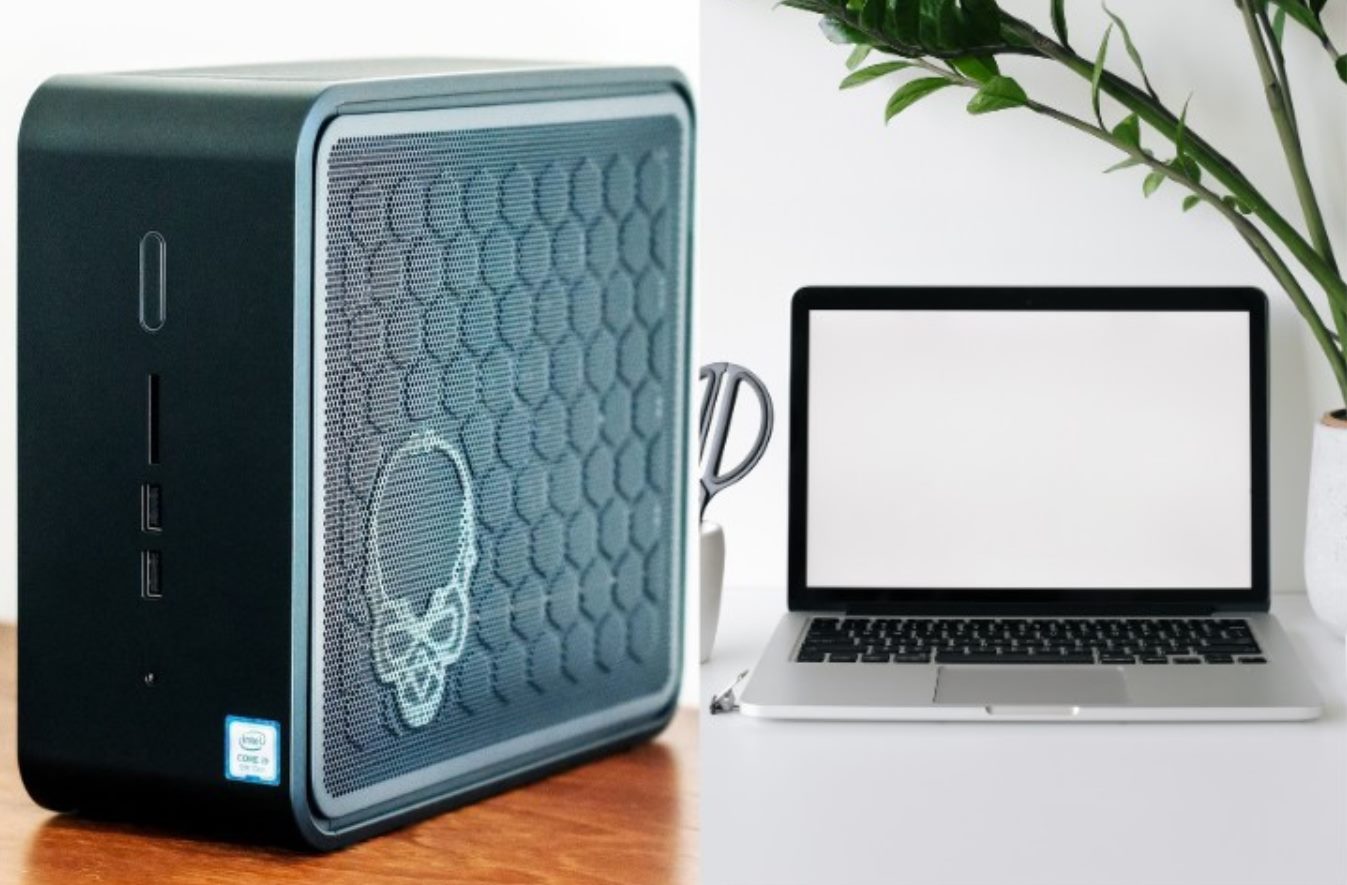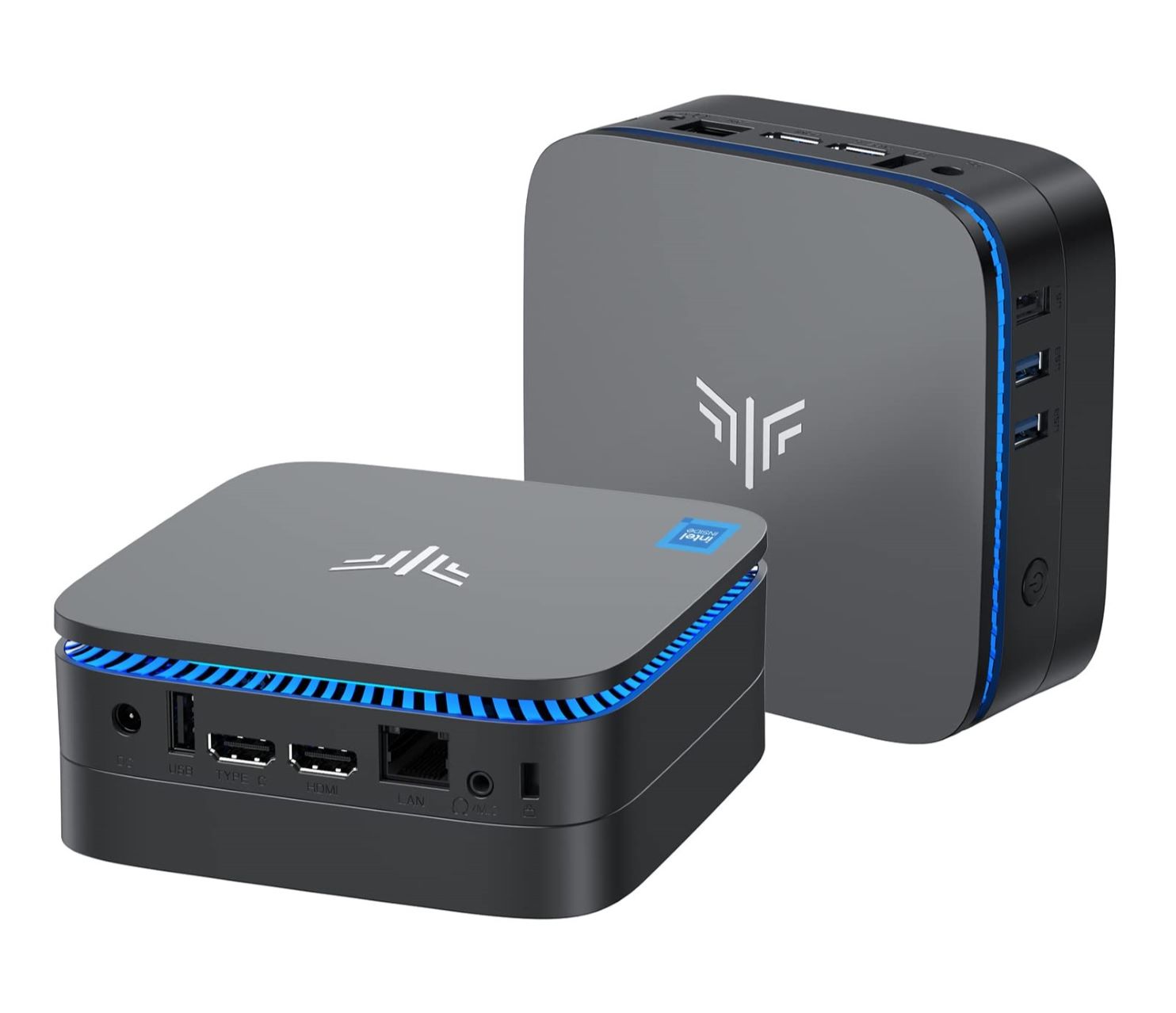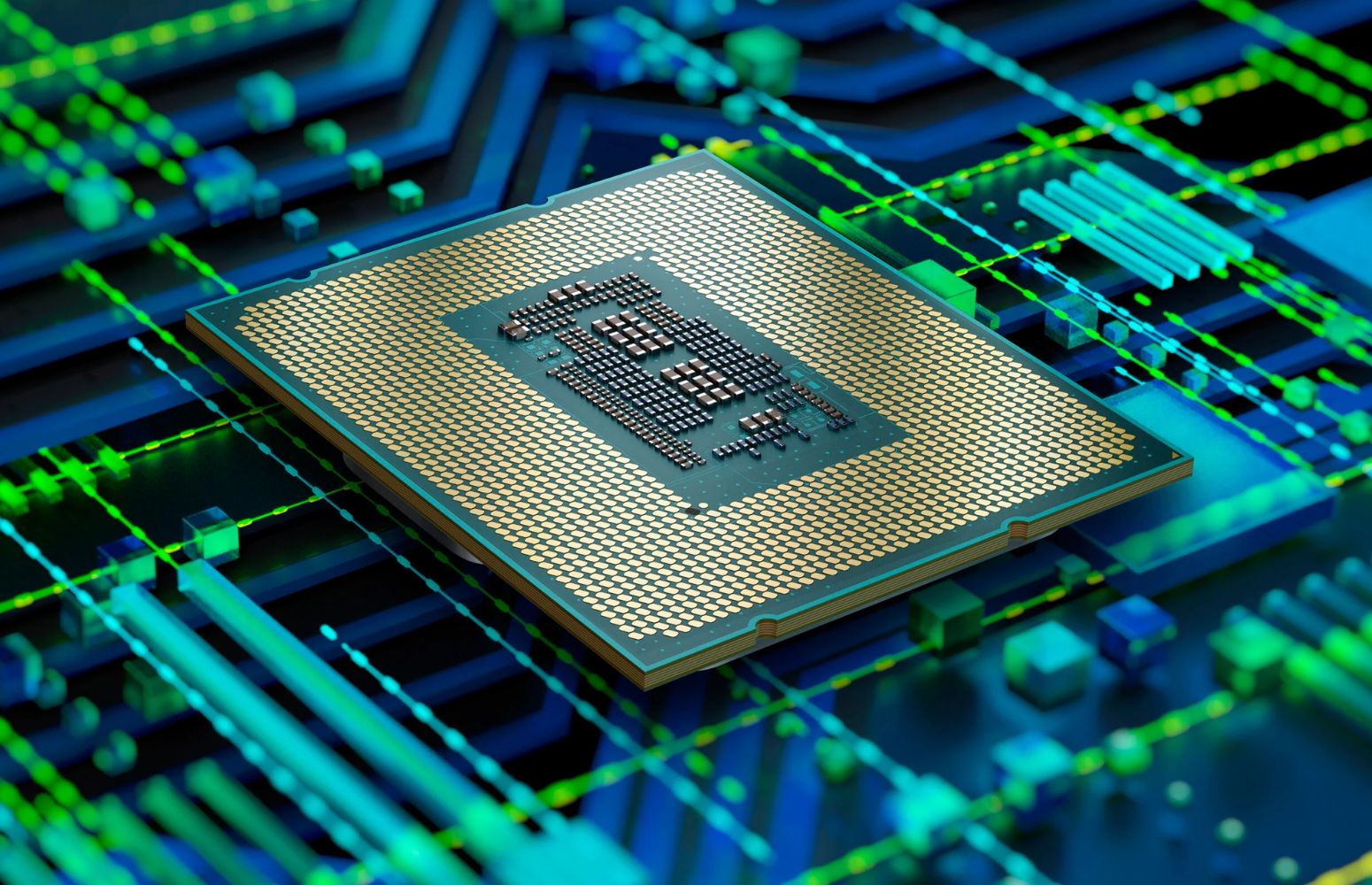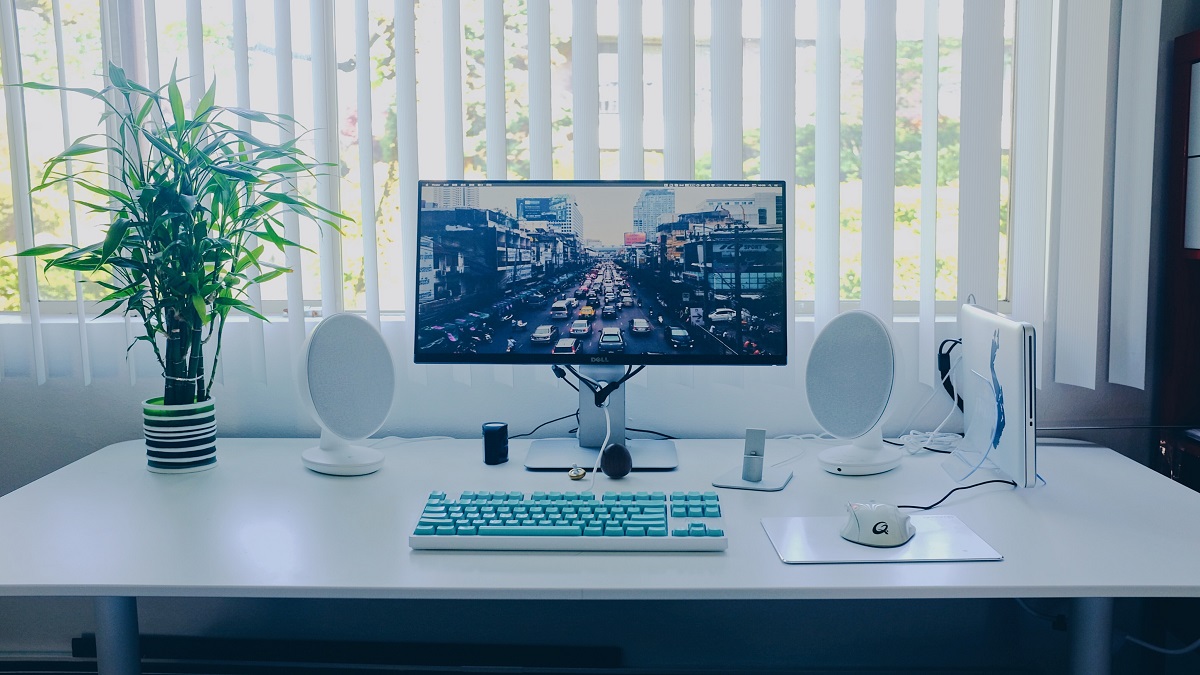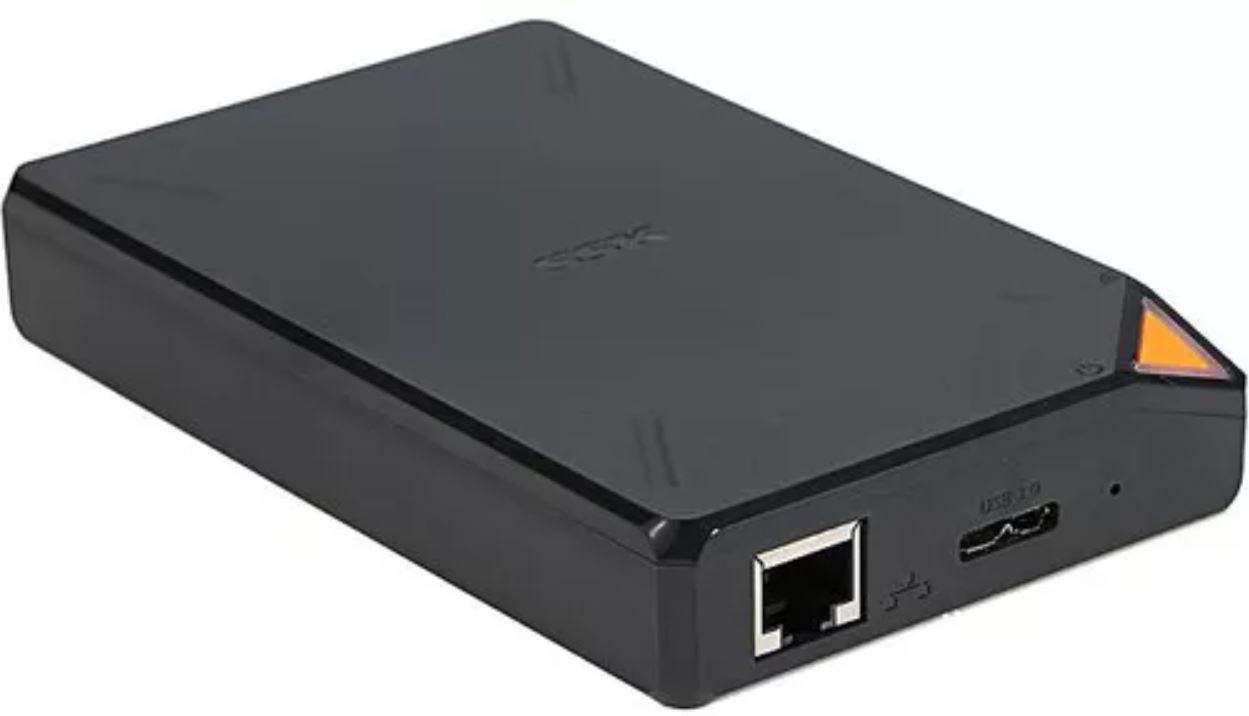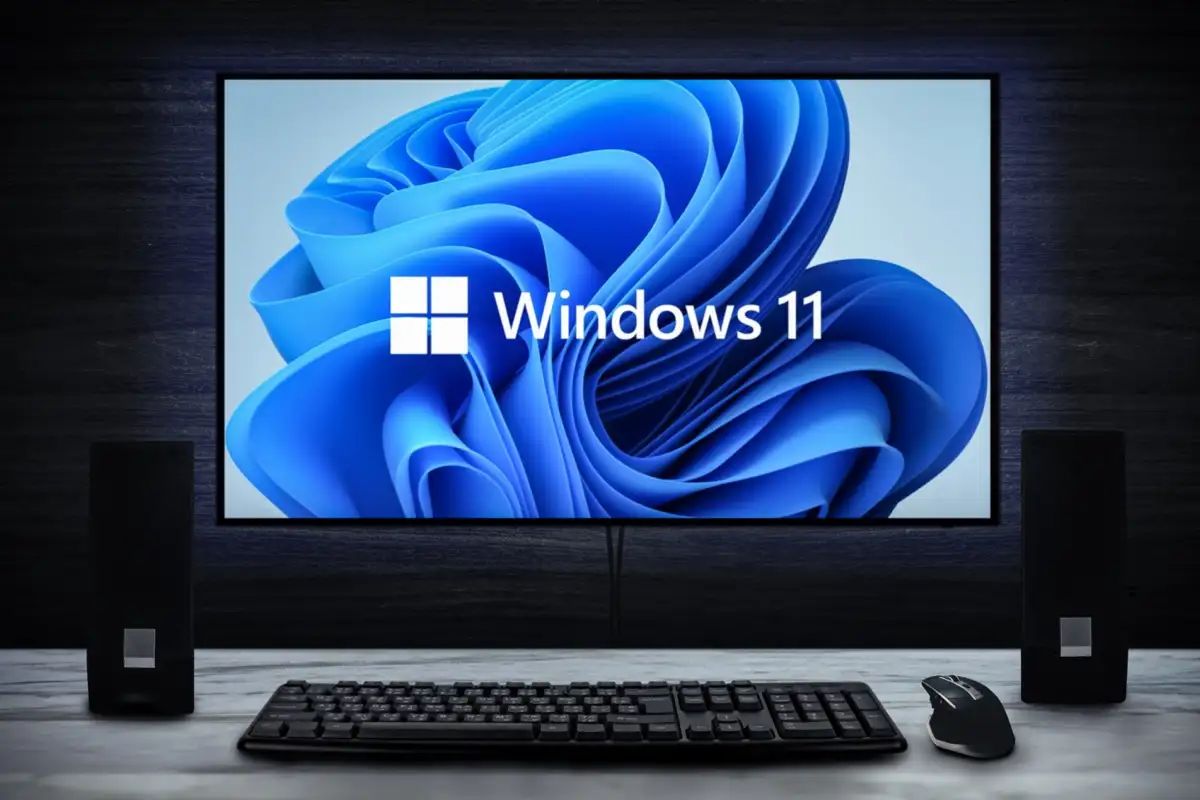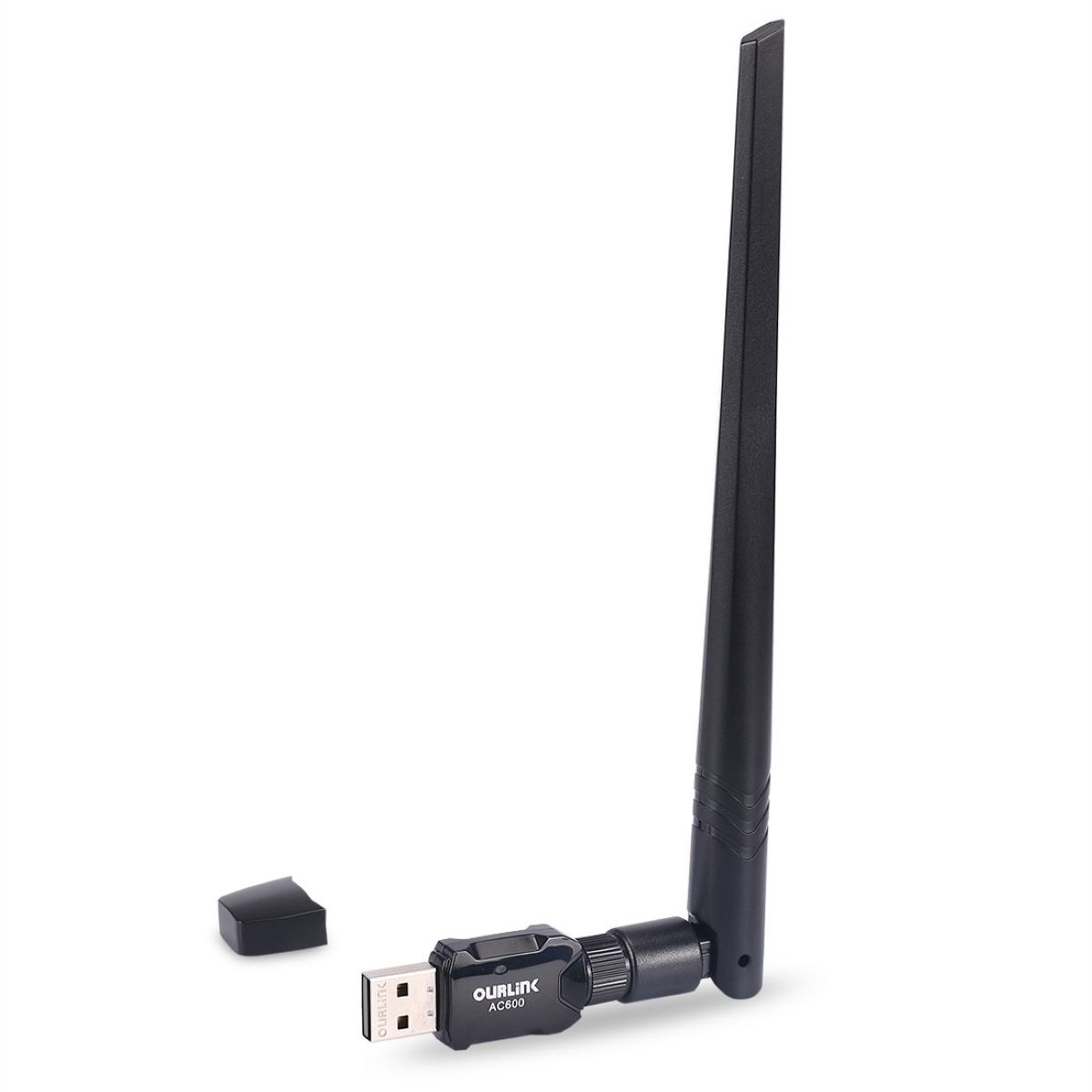Introduction
As technology continues to advance, our devices become more portable and powerful. Two popular devices in the tech world are mini PCs and laptops. A mini PC, also known as a mini computer or mini desktop, is a compact version of a traditional desktop computer. On the other hand, a laptop is a portable computer designed for everyday use. Both devices have their own distinct features and functions, but have you ever wondered what happens if you connect a mini PC to a laptop?
In this article, we will explore the possibilities and implications of connecting a mini PC to a laptop. We will delve into the benefits it can offer, the challenges you may encounter, and the steps to connect them smoothly. Whether you’re a tech enthusiast, a professional in need of additional computing power, or simply curious about the capabilities of these devices, this article will provide valuable insights.
Connecting a mini PC to a laptop opens up a whole new world of possibilities. Imagine the convenience of having the processing power and storage capacity of a desktop computer while enjoying the portability and versatility of a laptop. Whether you want to expand your workspace, increase productivity, or simply have the ability to work on multiple screens, connecting a mini PC to a laptop can help you achieve just that.
What is a Mini PC?
A mini PC, or mini computer, is a compact version of a traditional desktop computer. It is designed to provide the power and features of a full-sized computer in a small and portable form factor. While mini PCs may vary in size and specifications, they typically offer a variety of ports and connectivity options, allowing users to connect peripherals such as monitors, keyboards, and mice.
Mini PCs are known for their small footprint and versatility. They often feature a small form factor, such as a cube, rectangular box, or slim metal chassis, making them ideal for those who have limited desk space or require a portable computing solution. Despite their compact size, mini PCs are capable of delivering impressive performance, allowing users to perform tasks ranging from basic web browsing to intensive multimedia editing.
One of the key advantages of mini PCs is their energy efficiency. Compared to traditional desktop computers, mini PCs consume less power, resulting in lower energy bills and reduced environmental impact. Additionally, many mini PCs are equipped with efficient cooling systems that keep the device cool during extended periods of use.
Mini PCs are available in various configurations, allowing users to choose the specifications that best fit their needs. They can be customized with different processors, RAM capacities, storage options, and operating systems. Some mini PCs even offer the flexibility to upgrade certain components, ensuring that your device can adapt to your evolving computing requirements.
Due to their small size and portability, mini PCs are popular among professionals who require powerful computing on the go. They are commonly used in industries such as digital signage, home theater systems, kiosks, and even as media centers for enthusiasts who want to stream multimedia content to their TVs. Mini PCs are also favored by gamers who desire a compact gaming system without sacrificing performance.
What is a Laptop?
A laptop, also known as a notebook computer, is a portable personal computer designed for everyday use. Unlike desktop computers, laptops are compact and lightweight, allowing users to easily carry them from one place to another. Laptops combine the functionality of a desktop computer with the convenience and mobility of a portable device, making them a popular choice for both work and entertainment purposes.
Laptops typically consist of a keyboard, display screen, and a built-in pointing device, such as a touchpad or trackpad, for navigation. They are designed to be powered by a rechargeable battery, allowing users to use them without being tethered to a power source for an extended period of time.
One of the key advantages of laptops is their portability. Whether you need to work on the go, attend a meeting, or simply relax and watch a movie, laptops offer the flexibility to use them wherever you are. They are commonly used by students, business professionals, and travelers who require a powerful computing device that can be easily transported.
Laptops come in various sizes, ranging from small and lightweight ultrabooks to larger and more powerful gaming laptops. The display size of a laptop can vary, with options ranging from compact 11-inch screens up to larger 17-inch screens. Additionally, laptops offer different levels of performance based on the processor, RAM, and storage capacity.
Modern laptops often come equipped with a variety of features such as built-in webcams, speakers, and microphones, allowing users to communicate and collaborate with others. They also offer connectivity options such as USB ports, HDMI ports, and wireless capabilities, enabling users to connect peripherals and external devices seamlessly.
Whether you need to create documents, browse the internet, edit photos and videos, or play games, laptops provide the versatility and convenience to accomplish these tasks. With advancements in technology, laptops are becoming increasingly powerful, allowing users to tackle demanding applications and multitask efficiently.
In summary, laptops are portable computers that offer a combination of functionality, convenience, and mobility. They have become an integral part of our daily lives, empowering users to work, communicate, and entertain themselves wherever they go.
Connecting a Mini PC to a Laptop
Connecting a mini PC to a laptop opens up a world of possibilities, allowing you to harness the power of a desktop computer while benefiting from the portability and convenience of a laptop. By establishing a connection between these two devices, you can enhance your computing experience, expand your workspace, and increase productivity.
One of the primary reasons for connecting a mini PC to a laptop is to extend your screen real estate. If you find yourself needing more screen space to work on multiple tasks simultaneously, connecting your mini PC to a laptop can provide you with the extra monitor you desire. This is especially useful for professionals who require a multi-monitor setup for video editing, graphic design, coding, or financial analysis.
Moreover, connecting a mini PC to a laptop enables you to utilize the processing power and storage capacity of the mini PC while accessing your laptop’s peripherals. If you have specific software or applications that require more resources than your laptop can handle, using the mini PC as a dedicated processing unit can significantly improve performance. This is particularly valuable for tasks such as 3D modeling, running virtual machines, or rendering high-quality videos.
In addition, connecting a mini PC to a laptop can streamline your workflow. By sharing files and resources between the two devices, you can easily transfer data, access files from different platforms, and synchronize your work. This seamless integration enhances collaboration and allows you to seamlessly switch between devices without interruptions.
It’s important to note that connecting a mini PC to a laptop may come with some challenges. Compatibility is a key consideration, as both devices need to support the necessary connectivity options, such as HDMI, USB, or wirelessly through Wi-Fi or Bluetooth. Additionally, you may need to ensure that the operating systems and drivers of both devices are up to date to ensure smooth communication and functionality.
Furthermore, the performance of the connected mini PC may depend on the capabilities of your laptop. While the mini PC can provide additional power and storage, it is limited by the laptop’s processing capabilities. Therefore, it’s essential to conduct thorough research and understand the limitations and specifications of your laptop before connecting it to a mini PC.
In the next section, we will delve into the steps involved in connecting a mini PC to a laptop, providing you with a guide to successfully establish a connection and optimize your computing experience.
Benefits of Connecting a Mini PC to a Laptop
Connecting a mini PC to a laptop can bring numerous benefits that enhance your computing experience and productivity. By leveraging the strengths of both devices, you can enjoy the advantages of a desktop computer alongside the portability and convenience of a laptop.
One of the key benefits of connecting a mini PC to a laptop is the flexibility it provides in terms of screen real estate. By utilizing the mini PC as an additional monitor, you can expand your workspace and have multiple applications and documents open simultaneously. This is particularly beneficial for professionals who require a larger desktop space, such as graphic designers, video editors, or programmers.
Moreover, connecting a mini PC to a laptop allows you to harness the processing power and storage capacity of the mini PC. This is especially valuable for resource-intensive tasks that require advanced computing capabilities, such as 3D modeling, rendering, or running virtual machines. By offloading these tasks to the mini PC, you can significantly improve performance and ensure smooth workflow without overloading your laptop’s capabilities.
Another advantage of connecting a mini PC to a laptop is the ability to share files and resources seamlessly between the two devices. This enables efficient collaboration and synchronization of work, as you can easily access files, transfer data, and coordinate tasks between the mini PC and laptop. Whether you’re working on a project, sharing documents, or managing multimedia files, the connection enhances your workflow and productivity.
In addition, connecting a mini PC to a laptop allows you to leverage the peripherals and connectivity options available on both devices. For example, if your laptop has a high-quality keyboard, mouse, or other peripherals, you can use them with the mini PC to enhance your overall computing experience. Similarly, you can take advantage of the laptop’s wireless connectivity options, such as Wi-Fi or Bluetooth, to connect peripherals or transfer files between devices seamlessly.
Furthermore, connecting a mini PC to a laptop offers the convenience of having a portable workstation that combines the power of a desktop with the mobility of a laptop. This is particularly useful for professionals who need to work on the go, travel frequently, or require a portable solution for client presentations or meetings. You can simply disconnect the mini PC from the laptop and carry it separately, ensuring that your work and data are always accessible.
In summary, connecting a mini PC to a laptop brings a range of benefits, including expanded screen real estate, enhanced processing power and storage capacity, seamless file sharing and collaboration, utilization of peripherals, and the convenience of a portable workstation. By leveraging the strengths of both devices, you can optimize your computing experience and boost your productivity.
Challenges of Connecting a Mini PC to a Laptop
While connecting a mini PC to a laptop offers various benefits, there are also some challenges that you may encounter during the process. These challenges are important to consider to ensure a smooth and successful connection between the two devices.
Compatibility is one of the main challenges when connecting a mini PC to a laptop. Both devices need to have the necessary connectivity options, such as HDMI, USB, or wireless capabilities, to establish a connection. It’s crucial to check whether your laptop and mini PC have the required ports and compatibility to ensure seamless communication and functionality.
Additionally, ensuring that the operating systems and drivers of both your laptop and mini PC are up to date is essential. Outdated software or incompatible drivers may result in connectivity issues, reduced performance, or even prevent the devices from recognizing each other.
Another challenge to consider is the performance limitation of the connected mini PC. Although the mini PC can provide additional power and storage capacity, it will ultimately depend on the capabilities of your laptop. If your laptop has limited processing power or RAM, it may bottleneck the performance of the mini PC. It’s important to research the specifications and limitations of your laptop before connecting it to a mini PC to ensure optimal performance.
Furthermore, the physical space and setup can present challenges when connecting a mini PC to a laptop. Depending on the location and arrangement of your devices, you may need to consider cable management, finding a suitable workspace, and ensuring proper ventilation for both the laptop and mini PC. This is particularly important to avoid overheating and potential damage to the devices during extended periods of use.
Another potential challenge is the need for additional peripherals and accessories. Depending on the setup and requirements, you may need to invest in additional cables, adapters, or docking stations to establish the connection between the mini PC and laptop. These additional components can add complexity and cost to the setup, so careful consideration of your specific needs and budget is important.
Lastly, troubleshooting connectivity issues or resolving compatibility conflicts can be time-consuming and frustrating. It’s important to have a good understanding of the technical aspects of both your laptop and mini PC, as well as troubleshooting techniques, to overcome any challenges that may arise during the connection process.
Despite these challenges, with proper research, preparation, and troubleshooting, connecting a mini PC to a laptop can be a rewarding experience that expands your computing capabilities and enhances your productivity.
How to Connect a Mini PC to a Laptop
Connecting a mini PC to a laptop requires following specific steps to establish a stable and functional connection between the two devices. By following these guidelines, you can ensure a seamless integration and maximize the benefits of connecting a mini PC to your laptop.
First, check the available connectivity options on both your mini PC and laptop. Common connection methods include HDMI, USB, and wireless options such as Wi-Fi or Bluetooth. Verify that both devices have compatible ports and capabilities to establish a connection.
If you plan to connect the devices through a wired connection, ensure that you have the appropriate cables, such as an HDMI cable or USB cable, depending on the available ports on your devices. Connect one end of the cable to the output port of your mini PC and the other end to the input port on your laptop. Make sure the cables are securely connected to both devices.
If your devices support wireless connectivity, ensure that both your mini PC and laptop are connected to the same Wi-Fi network. Follow the manufacturer’s instructions to enable wireless connectivity and establish a connection between the two devices. This may involve configuring settings on both devices to recognize and communicate with each other wirelessly.
Once the physical or wireless connection between the mini PC and laptop is established, you may need to configure the display settings on your laptop. Depending on your operating system, you may need to access the display settings or control panel to detect and configure the additional display connected to your laptop. This will allow you to extend your screen or use the mini PC as the primary display.
Furthermore, consider any additional peripherals or accessories you may need to enhance the functionality of the connected devices. For example, you may need a keyboard and mouse to control the mini PC, especially if your laptop’s peripherals are not easily accessible when connected. Connecting additional peripherals can enhance your overall computing experience and productivity.
Lastly, it is crucial to update the operating systems and drivers of both the mini PC and laptop. Check for any available updates and install them to ensure compatibility and optimal performance. Outdated software or incompatible drivers can hinder the connection or limit functionality between the two devices.
By following these steps and ensuring compatibility, you can successfully connect your mini PC to your laptop and enjoy the benefits of a expanded computing capabilities, enhanced productivity, and a seamless integration of both devices.
Steps to Connect a Mini PC to a Laptop
Connecting a mini PC to a laptop involves several steps to establish a successful connection between the two devices. By following these steps, you can ensure a smooth integration and maximize the benefits of connecting your mini PC to your laptop.
1. Check connectivity options: Verify the available connectivity options on both your mini PC and laptop, such as HDMI, USB, or wireless capabilities like Wi-Fi or Bluetooth. Ensure that both devices have compatible ports and capabilities for establishing a connection.
2. Select the appropriate cable: If you plan to connect the devices through a wired connection, choose the appropriate cable based on the available ports. For example, an HDMI cable or USB cable may be required. Connect one end to the output port of the mini PC and the other end to the input port on the laptop. Ensure that the cables are securely connected to both devices.
3. Configure wireless connectivity: If your devices support wireless connectivity, make sure both the mini PC and laptop are connected to the same Wi-Fi network. Follow the manufacturer’s instructions to enable wireless connectivity and establish a connection between the devices. This may involve configuring settings on both devices to recognize and communicate with each other wirelessly.
4. Adjust display settings: Once the physical or wireless connection between the mini PC and laptop is established, go to the display settings or control panel on your laptop’s operating system. Detect and configure the additional display (the mini PC) connected to your laptop. You can choose to extend your screen or use the mini PC as the primary display, depending on your preferences.
5. Add necessary peripherals: Consider any additional peripherals or accessories you may need to enhance the functionality of the connected devices. For example, if your laptop’s peripherals are not easily accessible when connected, connect a separate keyboard and mouse to control the mini PC. Adding peripherals can improve your overall computing experience and productivity.
6. Update operating systems and drivers: It is crucial to update the operating systems and drivers of both the mini PC and laptop. Check for any available updates and install them to ensure compatibility and optimal performance between the devices. Outdated software or incompatible drivers can hinder the connection or limit functionality.
By following these steps, you can successfully connect your mini PC to your laptop and enjoy the expanded computing capabilities, enhanced productivity, and seamless integration between the devices. Always refer to the manufacturer’s instructions and documentation specific to your devices for precise guidance on connecting them.
Things to Consider Before Connecting a Mini PC to a Laptop
Before connecting a mini PC to a laptop, there are several important factors to consider to ensure a successful and satisfactory experience. These considerations will help you determine compatibility, address potential limitations, and make informed decisions before establishing a connection between the two devices.
1. Compatibility: Check for compatibility between your mini PC and laptop. Ensure that they have the necessary ports and connectivity options to establish a connection. Verify whether both devices support the same protocols, such as HDMI, USB, or wireless technologies, to ensure seamless communication.
2. Operating System: Verify that the operating systems on both devices are compatible. Ensure that the laptop’s operating system supports the drivers and software required by the mini PC. This will facilitate data transfer, file sharing, and device recognition between the two devices.
3. Processing Power: Assess the processing power of your laptop and the mini PC. Evaluate whether the mini PC provides a significant performance boost compared to your laptop. Consider the specific tasks or applications that require more computing power and determine if connecting the mini PC will enhance performance accordingly.
4. Storage Capacity: Examine the storage capacity of your laptop and mini PC. Determine if connecting the mini PC will provide additional storage space or if you need to offload certain files or applications to accommodate the extra storage capacity of the mini PC.
5. Peripherals and Accessories: Consider the peripherals and accessories you may need. Assess if your laptop’s peripherals, such as the keyboard, mouse, or speakers, can be easily used with the connected mini PC. Determine if you need to invest in additional peripherals or adapters to make the connection as seamless as possible.
6. Physical Space: Assess the physical space available for both the mini PC and laptop. Consider the size of your workspace and ensure that you have enough room to accommodate both devices comfortably. Take into account cable management and proper ventilation for optimal performance and prevent overheating.
7. Operating Environment: Consider the operating environment in which the devices will be used. Determine if the setup will be stationary or if you require a portable solution. Assess the power supply availability to ensure uninterrupted operation, especially if the mini PC requires a separate power source.
8. Future Upgrades and Compatibility: Evaluate potential future upgrades and expansion. Determine if the mini PC can be upgraded or if it meets your anticipated needs for the foreseeable future. Consider the compatibility of future software updates and hardware upgrades to ensure the longevity and compatibility of your setup.
Considering these factors before connecting a mini PC to a laptop will help you make informed decisions and avoid potential compatibility issues. It’s important to research and understand the specifications, requirements, and limitations of both devices to ensure a seamless and satisfying connection experience.
Conclusion
Connecting a mini PC to a laptop opens up a world of possibilities by combining the power of a desktop computer with the portability and convenience of a laptop. By following the necessary steps and considering important factors, you can establish a stable connection and maximize the benefits of connecting these devices.
A mini PC offers expanded screen real estate, enhanced processing power, and increased storage capacity, while a laptop provides mobility and convenience. By connecting the two, you can enjoy the benefits of a multi-monitor setup, improved performance for resource-intensive tasks, seamless file sharing and collaboration, and the utilization of peripherals.
However, there are challenges to be aware of, such as compatibility issues, performance limitations, and the need for additional peripherals or accessories. By conducting thorough research, ensuring compatibility, and updating operating systems and drivers, you can overcome these challenges and achieve successful integration between your mini PC and laptop.
Before connecting the devices, consider factors such as compatibility, processing power, storage capacity, peripherals, physical space, and your operating environment. By evaluating these aspects, you can make informed decisions and create a setup that aligns with your computing needs and preferences.
Ultimately, connecting a mini PC to a laptop offers a versatile and efficient computing solution. It expands your capabilities, enhances productivity, and provides the flexibility to work and collaborate across multiple screens. Whether you’re a creative professional, a tech enthusiast, or someone who seeks a powerful yet portable computing solution, connecting a mini PC to a laptop can greatly enhance your computing experience.
By following the steps and considering the important factors outlined in this article, you can establish a successful connection and enjoy the benefits of a versatile computing setup that combines the best features of both devices. Embrace the possibilities and explore the endless potential when you connect a mini PC to your laptop.







